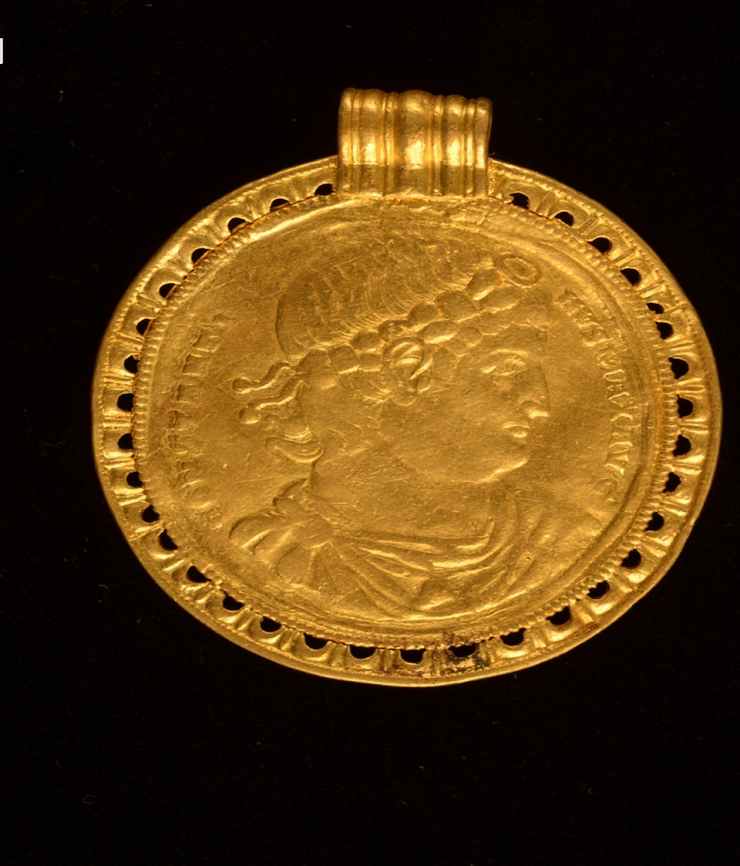Ole Ginnerup Schytz měl velké štěstí, že nemusel dánské tv vyprávět nějaký dojemný příběh o tom, jak poklad vykopal pejsek. Nebo že na něho narazil, když dováděl se spolužákem v místních travinách atp. 
Krásný nález, super přístup. Prostě všechno dobře :)
The Great Danish Golden Treasure
Categories: Treasures , Nálezy nejenom s detektorem ve Skandinávii
The 1500-year-old pre-Viking find is one of Denmark's most important gold treasures. It contains more than 20 rare items, making it a major find in Danish history.
Ole Ginnerup Schytz was walking with an old classmate around the Danish town of Vindelev last December and had fun searching with a metal detector. A few hours later he made a discovery that is qualitatively one of the biggest gold finds in Danish history, a 1,500-year-old gold treasure. At that moment, however, he didn't know about it.
First, while digging, he discovered a small piece of bent metal. "It was full of bruises and mud. I had no idea. All I could think of was that it looked like the lid of a can of pickled herring," he told Danish television.
But when he then continued digging, he came across about 20 rare objects consisting of a hugeplate-sized medallions called "bracteates" and coins and jewellery from the Roman Empire. They were most likely worn as ornaments or clothing.
After this huge find, archaeologists set about excavating. They now know that the treasure was buried on the site of the original building about 1,500 years ago. According to Vejlemuseerne, a consortium of museums in the Danish city of Vejle, the huge gold treasure weighs almost 1 kg. The museum described it as "one of the largest, richest and most beautiful gold treasures in Danish history".
Some objects have motifs that may refer to the rulers of the time, while some symbols and inscriptions are in the spirit of Norse mythology.
Among the 'bracteates', one stands out in this sense. It has a male head with many runes. Below the head is a horse, a bird and a runic inscription between the horse's muzzle and forelegs that says "houaʀ". The inscription means "Exalted One" and probably refers to the ruler of the time or, in a methodical context, honors the Norse god Odin. The most notable coin, on the other hand, comes from the Roman Empire and features the face of the Roman emperor Constantine the Great.
According to researchers, this treasure proves Europe's connection through war and trade since the Iron Age.
Archaeologists suspect the treasure was buried during a global climate catastrophe. In 536, a volcano erupted and created a massive ash cloud that caused poor crops and famine for several years. This catastrophe caused the people of modern-day Denmark to rebel against the ruling class of the time. A side effect was the hiding of a number of larger or smaller depots. It was probably not only the fear of losing property in a chaotic period, but also the satisfaction of the 'angry gods',
Given this entire collection, experts now believe that Vindelev was the centre of a great empire in the late Iron Age.
Rare objects from the Vindelev hoard are expected to be on display at the Vejlemuseern Museum in February 2022 before moving to the Danish National Museum.


Source:trtworld.com
The article is included in categories:
- Archive of articles > Treasures
- Archive of articles > Archaeology > Finds and rescue research abroad > Nálezy nejenom s detektorem ve Skandinávii
Post
Krasny nalez škoda jen ze neni vic fotek... 👍










